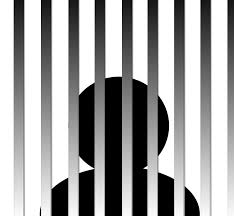It is very important that we look hard at the evidence before conviction, as it is increasingly easy to fake or manipulate that evidence. No one should be falsely accused, so it’s important to know what to look for.
Eyewitness Misidentifications
Eyewitness Misidentifications are the greatest contributing factor for wrongful convictions. More than 70% of convictions have been overturned by DNA testing throughout the nation.
In a standard lineup, the administrator typically knows who their suspect is already. Research has proven that lineup administrators have been known to send unintentional cues to the eyewitness about which person to pick. The eyewitness will often believe that the perpetrator is one of the people present in this lineup, which can lead to someone choosing a criminal without having any doubt. When this happens, the police will often stop their investigations even if they have picked an innocent person.
Lineup administrators may not document a statement from the eyewitness about the confidence of their selection from the lineup. Research has shown that information given to the eyewitness about their selection being the right person can drastically increase the confidence of their choice even if it is false.

Unvalidated / Improper Forensics (JUNK SCIENCE)
Unvalidated and improper forensics are the use of forensic techniques that have not yet been tested to show they’re valid.
Approximately 50% of wrongful convictions that have been overturned in the nation, had been measured with improper forensics. A good example of this is a bite mark comparison in which an identification of a biter is made from identifying a bite mark on the skin, a method that has been proven as inaccurate.
A misleading testimony can lead to wrongful convictions when a forensic testimony exaggerates or overstates the significance of similarities between evidence of a crime scene and evidence from an individual, or if data is oversimplified in the testimony.
In some cases, forensic analysts have hidden evidence, fabricated results, or reported results when testing had not been conducted.

Most wonder how someone could confess to a crime they never committed, but astonishingly 30% of people later exonerated by DNA evidence made a false confession or incriminating statement.
Some factors that contribute to or cause false confessions:
- Use of force by law enforcement during the interrogation.
- Fear, on part of the suspect, that failure to confess will yield a harsher punishment.
- Devious interrogation techniques, such as untrue statements about the presence of incriminating evidence.
- Compromised reasoning ability by the suspect, due to exhaustion, hunger, stress, substance use, mental limitations, or limited education. Young people who do not know their rights and are taught to please authority figures are particularly vulnerable.

Jailhouse Informants / Snitches
A jailhouse informant is a person who is incarcerated and provides a testimony usually about how a defendant confessed to a crime while in jail, often these informants have been given incentives from prosecutors to provide the testimony. 1/5 of wrongful convictions, which were later overturned with proper DNA evidence, contained statements from people with incentives to testify, which were critical to convicting an innocent person.
It is difficult to believe that people regularly confess to committing serious crimes to someone they just met in a jail cell. Real or perceived potential benefits in exchange for a testimony creates a strong incentive for jailhouse informants to lie.
Prosecutors may offer a jailhouse informant benefits such as:
- Sentence reduction.
- Special inmate privileges.
- Reduced charges in a pending criminal case.
- Assistance to family.
- Monetary payments.



